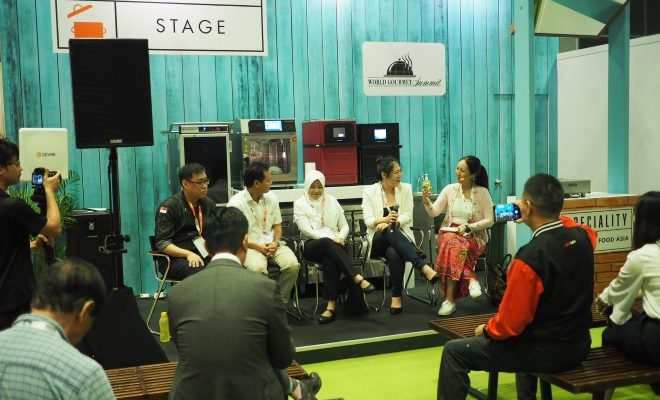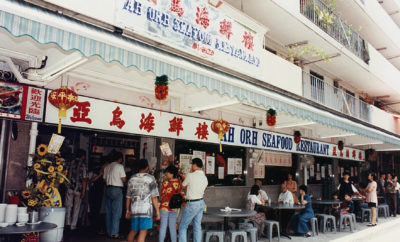
The Gen XY Lifestyle
Can our Singapore hawker heritage be saved?
The third edition of Speciality & Fine Food Asia (SFFA) opened in Singapore this week, providing companies in the retail, food service and hospitality sectors with an event to explore trends, buy-sell and establish relationships.
One of the panels focused on Singapore’s hawker heritage and food, and asked key questions about challenges, and how to solve them.
The session was moderated by Claire Ariela Shen, Owner of Cooking Art and Rainbow Lapis. She ran through various topics covering price, catering to the low-income customer, the hawker community and addressed the elephant in the room, whether hawker-ing is a sunset industry.
The panel shared some interesting responses about price. The consensus being that compared to our neighbouring countries, Singapore’s hawker food prices are quite cheap. They felt that it was time that customers understand why prices have to be raised, and that price and quality of the dish are always related.
Somewhat related to price, the panel discussed about the mindset customers have regarding condiments and “extras”. For example, extra chilli, extra noodles, extra vegetables. The example brought up was the same customer would willingly pay a restaurant for their extra items but hesitate to do so with a hawker. Instead they would insist the hawker provide the extra for free.
Another hot topic on challenges facing the industry was manpower. All the panellists agreed that finding the right help in the kitchen is difficult. Some spoke about changing policy to allow hiring foreigners to work at hawker stalls; others spoke attracting youth to join the industry – and reviving the hawker culture by doing so.
Technology reared its head at the panel when a member of the audience asked whether machines will replace hawkers. No panellist disagreed that machines will become more and more commonplace. Many agreed that machines can do some jobs well, such as dish washing or cleaning. However, they made it clear that good hawker food comes from attention, care and love put into the preparation of the dish, and that machines can never replicate those qualities.
We spoke separately with Jeremy, Owner of Preparazzi and Batu Lesung and one of Singapore’s rising culinary stars and an evangelist of modern Singaporean cuisine to get his opinion about hawker culture.
Active Age (AA): What is our Singapore hawker heritage?
Jeremy Nguee (JN): It was a necessity for our survival. Hawker-ing came about after World War Two as a means to survive. Many industries collapsed and there were not many jobs to go around. You had to be innovative to cook up a tasty and nutritious meal with relatively cheap ingredients.
That’s what the essence of our heritage is all about – creative, nourishing dishes that feed everyone; it is an extension of our kitchens, a boundless dining table that our community gathers around.
AA: In your opinion, what are the features of our hawker culture that we want to keep?
JN: Creativity, commitment to honing your craft to a high degree of skill, low barriers to entry and sustainable operating model, accessibility to all walks of society.
AA: How do you see our hawker culture evolving in the coming years?
JN: Dishes that are not popular will be at risk of disappearing such as beef noodles, pau shops, ham jim paeng.
Dishes that have a high perceived value and a higher degree of complexity will be able to move into more upscale formats, for example, restaurants, speciality cafes, shopping centre quick service. [These include cuisines such as] Peranakan food, bak kut teh. Whereas trendy foods that have a lower operating cost and lower barriers to prepare but with a high entry price will move into hawker centres, for example, pastas, burgers, bubble tea, ramen.
Speciality & Fine Food Asia (SFFA) runs from 17 to 19 July, at Suntec Singapore. The event is open to trade and features an expanded programme line-up including fringe events, competitions, as well as a more diverse range of chefs, bartenders and speciality food and drink products and technologies.








